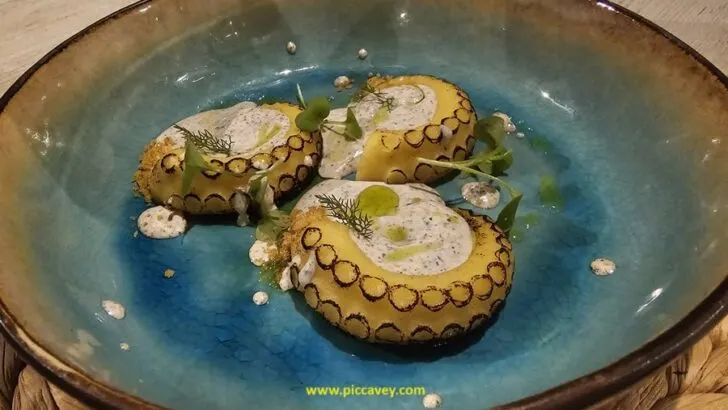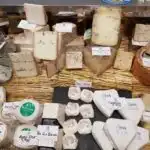The Balearic Island of Menorca became a UNESCO. Biosphere Reserve in 1993. This beautiful island has an stunning coastlines and an interesting history. Yet don´t underestimate Menorcan food. The balance between farming, agricultural use and the ecology of the island maintains many of the old traditions alive.
In June I took a trip over to discover the local Menorca Food myself and here are my findings:
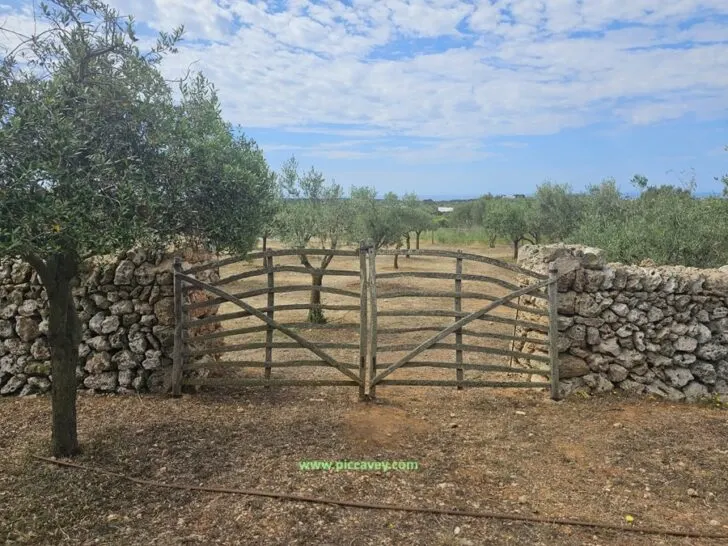
Mahon Cheese
Menorca has been inhabited for over 4000 years and way back in 2000 years B.C they were already making cheese. The DOP Mahon variety is made from Cow´s milk and the key to its flavour is the islands geography. The combination of the tramutana wind, the humidity and sunshine on the island. The DOP was recognised on Menorca in 1985. There are two ways of producing this protected Mahon cheese.
- Queso Mahón-Menorca (pasturised/use of moulds)
- Queso Mahón Menorca Artesano (unpasturised/hand shaped)
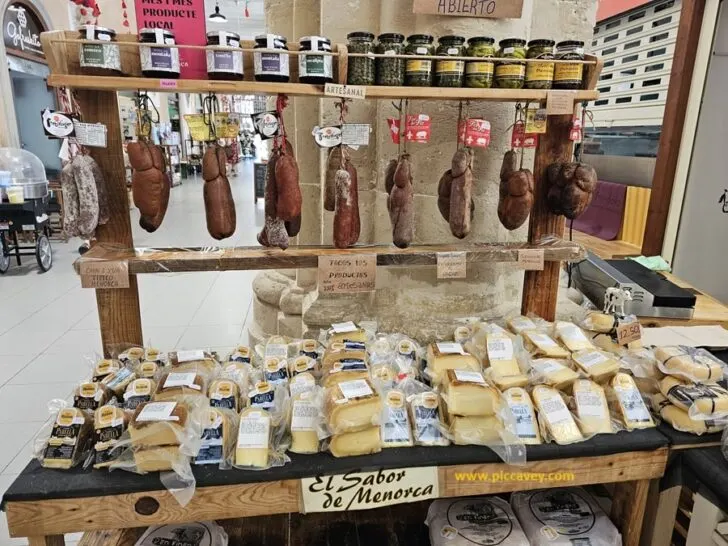
Menorcan Food – Figat
To pair one of the local cheeses, pick up a jar of Figat. This thick fig jam is a recipe dating back to medieval times. Basically it is made from the last figs each season. This delicious spread is also lovely for breakfast to serve on toast.
In reality there are three different categories, according to how long the cheese is aged:
- Queso tierno Soft Cheese 21 days
- Semicurado Semi Cured 60 days Semi Cured (photo below)
- Mahón curado Cured over 150 days
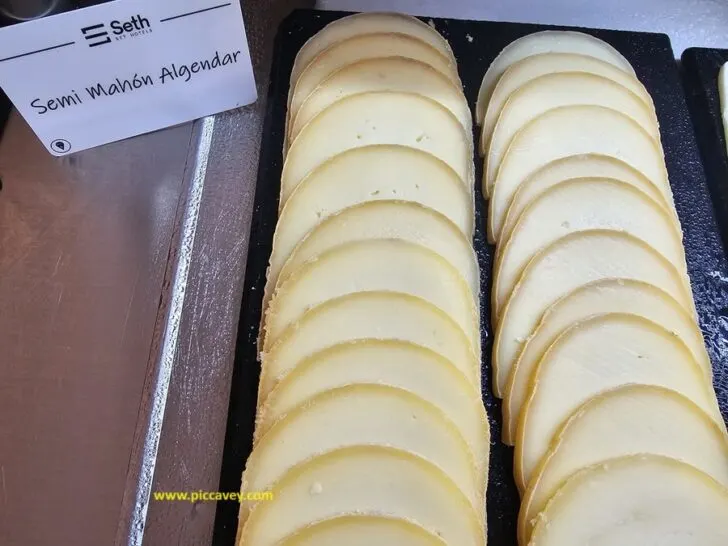
Oliaigua
Surprisingly the dish I enjoyed the most during my time in Menorca was Oliaigua. A rich tomato soup (served hot or cold) that has been made by shepherds and agricultors on the island for an unknown amount of time. Main ingredients are water, olive oil, tomatoes, green peppers and garlic. Lastly croutons or toasted bread is added ontop.
This one I tried at Agroturisme Gran Llucasaldent (hotel restaurant) but it´s available in many restaurants across the island as it is such a traditional and popular dish on Menorca.
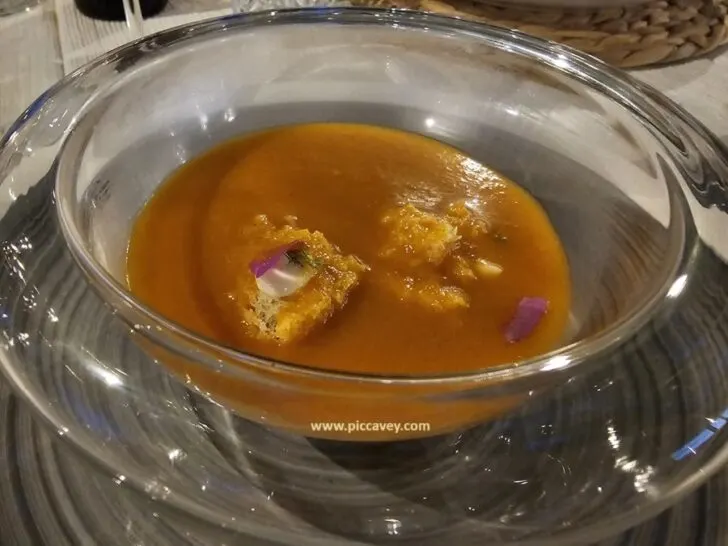
Mahon-naise
Did you know that Mayonnaise takes its name from Mahon?
In 1756 the Battle of Menorca between the French and English for the control of the island links up to this creamy sauce. The reason the french named the sauce Mahon-naise was to celebrate their victory over the British. The catalan sauce alioli (garlic mayonnaise) was modified by the french on the island. The Duke of Richelieu, the first French governor of Menorca gave this name to the condiment.
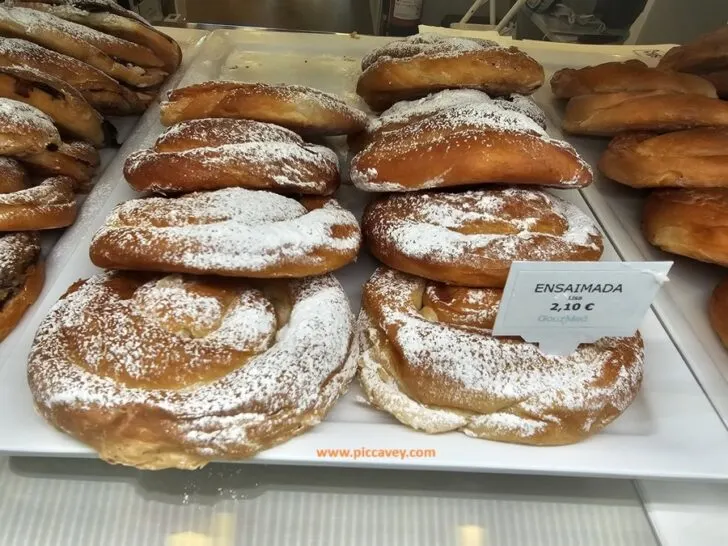
Typical Menorcan Bakes
In all Spanish towns and villages Menorca has its own local bakes following traditions centuries back. The one you will find easily is the Ensaimada. (also found in Mallorca and Ibiza.) This delicious pastry comes filled with creme patisserie, sweet pumpkin (cabello de angel) or left plain. In my opinion the best one of the Cabello del Angel. Sometimes you also find savoury ones with meaty sobresada fillings. (sobresada is like a spreadable chorizo)
- Ensaimada
- Crespellines are a crispy thin biscuit as seen below.
- Pastissets
- Carquinyols – Sweet Almond bakes which are crunchy and of Arab origin. Most famous from Es Mercadal.
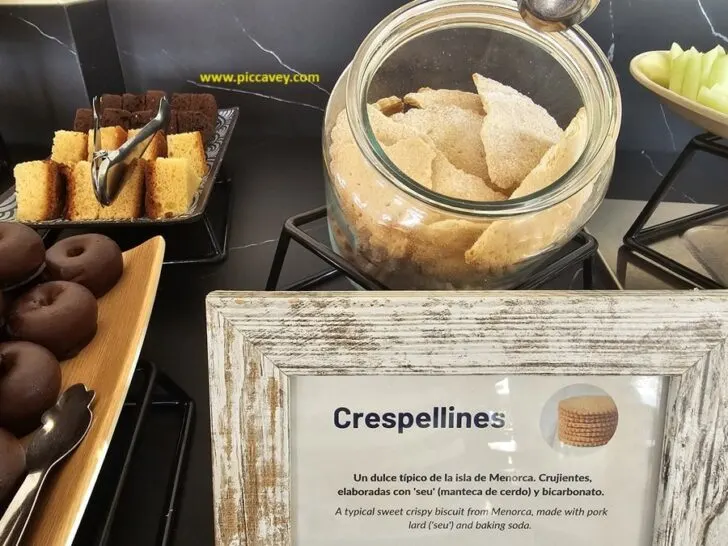
Pastissets
The most well known Menorcan treat comes in flower shapes. Made with lard, water, sugar and flour. Finally we have Duquesitas typical biscuits in Menorca, they are influenced by British and French bakes.

Pomada
This refreshing lemony drink has a small amount of Xoringuer Gin. It´s very typical on the island. In the 18th century the British ruled over 70 years in Menorca and their Gin tradition meant they had their own distillery.
Not to mention that Xoringuer distillery in Mahon Port is probably the oldest Gin in the Mediterranean. Made from a recipe from the beginning of 1700´s, they use 250 year old copper pots to distill and local olive wood to heat up the gin.

Xoringuer Gin Distillery
You can visit Xoringuer Distillery and its shop. It´s just opposite the Port of Mahon. Here in the photo you can see the Juniper berries drying in the sea air coming through the window.
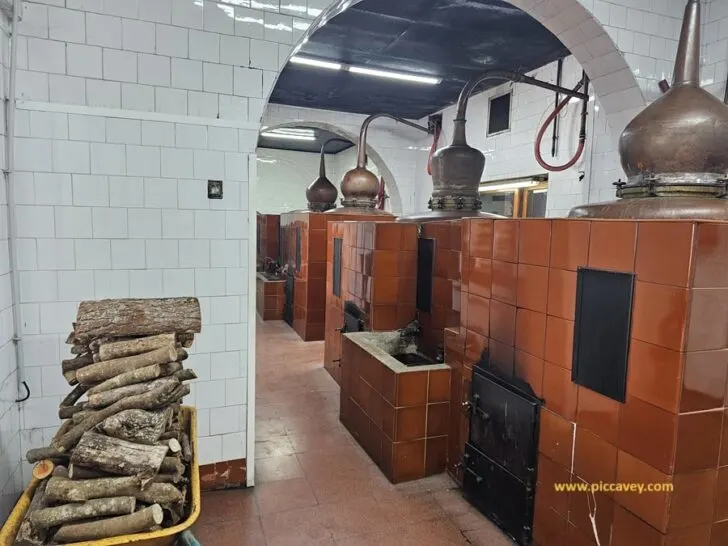
Local Menorca Wine
As Menorca has an ideal Mediterranean climate, Olive Oil and Wine are ideal crops to grow. On my second day in Menorca I visited Torralbenc Winery and Hotel. Located in Alaior, I learnt about the production of wine in the region and got to taste some of their wines. (Rosé White and Red)
Of the three wines I tried I have to confess that the Rosé surprised me. Not a big fan of Rosé wines, this one had a lovely balance of flavour and refreshing-ness for the summer season.
Local Menorcan wines come from these grape varieties:
- Red: Cabernet Sauvignon, Merlot, Monastrell, Tempranillo, Syrah.
- White: Chardonnay, Macabeo, Malvasia, Moscatel de Alejandria, Parellada, Moll.
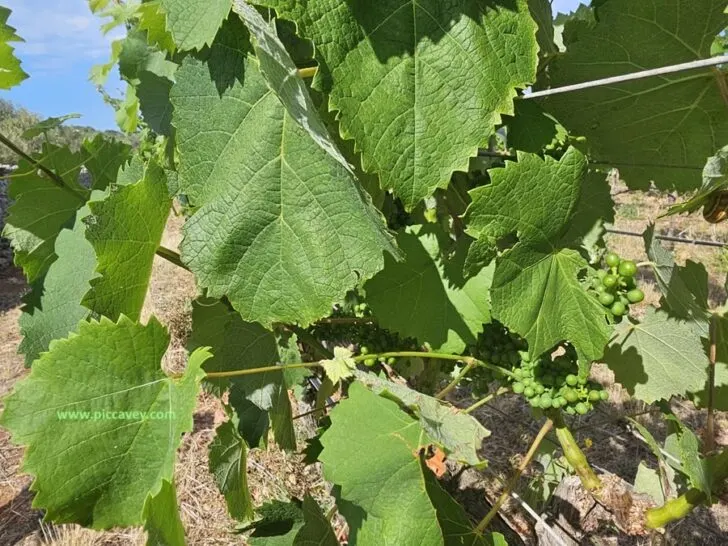
Carnixulla
One of the oldest and most typical foods on Menorca is the local sausage cold Carnixulla. Made with pork meat, bacon and spices. You will often see this offered as an apertif or starter on a deli board.
Menorca Food – Best Places to Eat
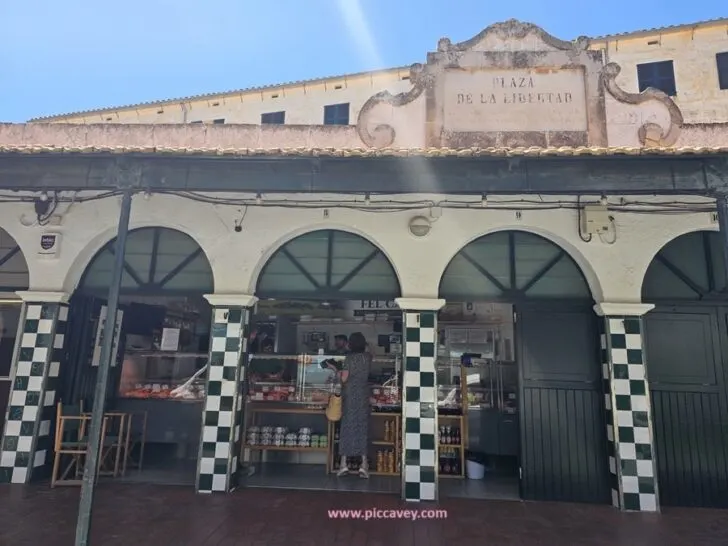
- Fish Market Mahon
Head to the Fish Market in Mahon. The choice of recently caught local seafood is stunning. You can choose different stalls and try food from those local fishmongers.
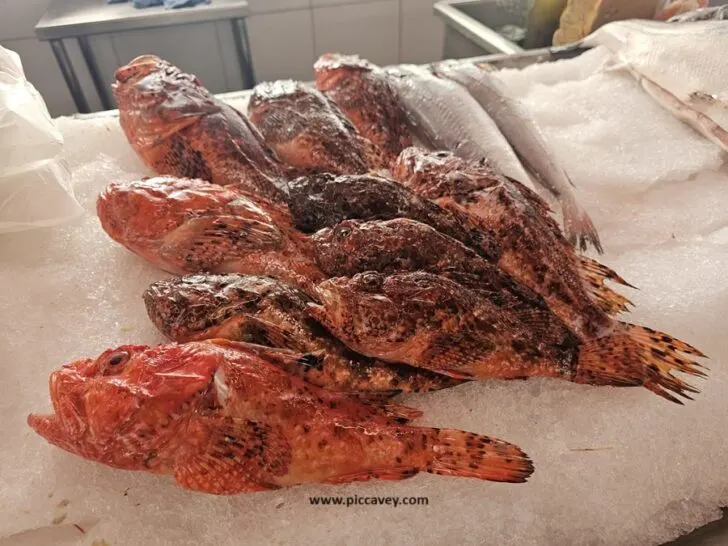
- 45 Pins Ciutadella
This charming restaurant on Plaça dels Pins in Ciutadella has a lovely team of staff to serve you the best of local food. Above all I noticed that the selection of dishes is varied and their wine list includes the best Spanish and also Menorcan wine.
Choose indoor or outdoor dining.
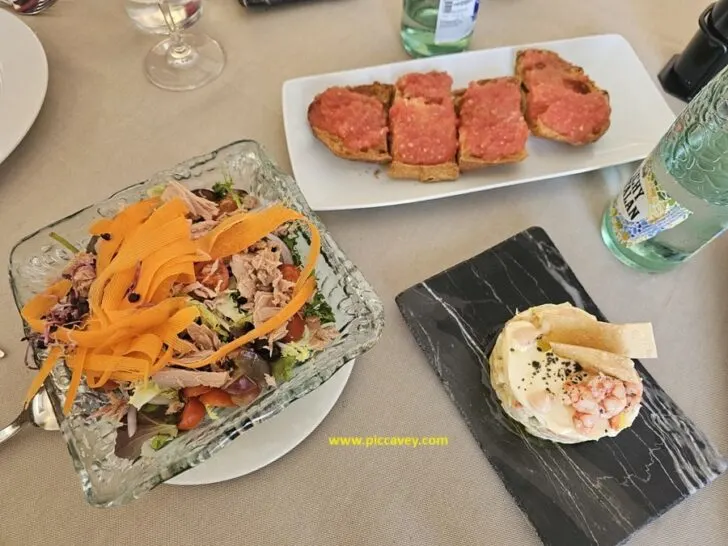 Sa Punta Es Castells
Sa Punta Es Castells
My favourite meal of my stay was Sa Punta. This restaurant overlooks the Marina at Es Castells. They have lots of vegetable dishes and refreshing salads. An elegant atmosphere inside and great fish and seafood options too.
Book ahead if you want to dine in the summer season. As it already seemed quite busy when I was there Early June.
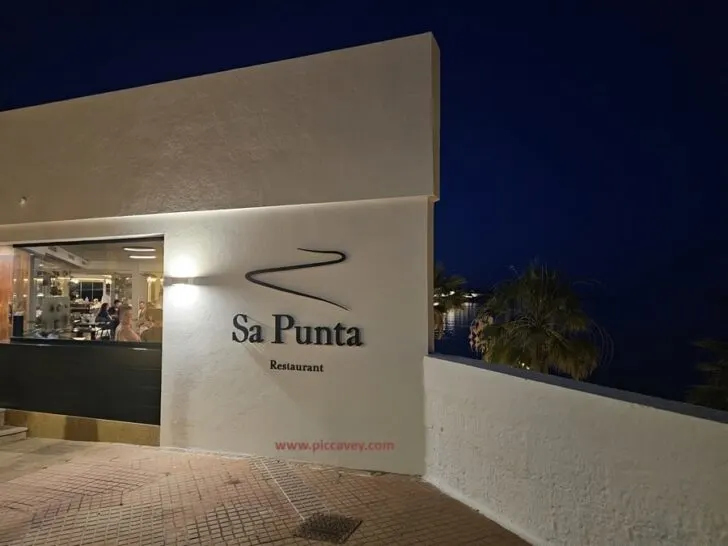
See more of my Menorcan foodie escape in this TikTok video
